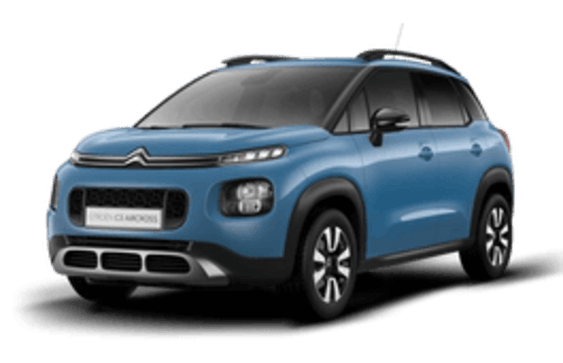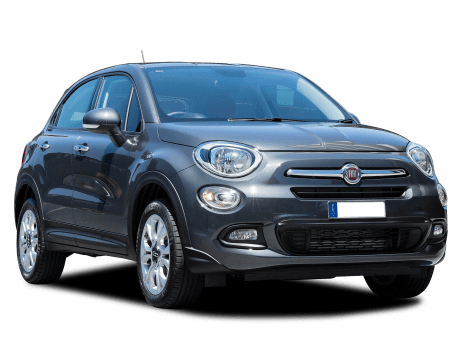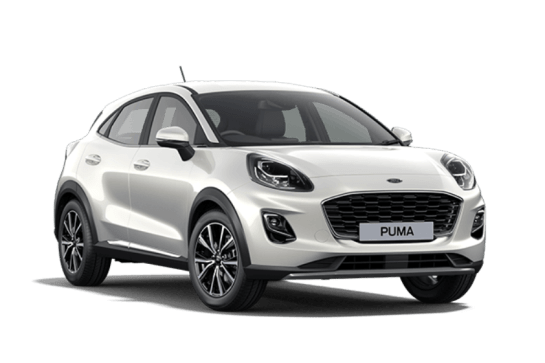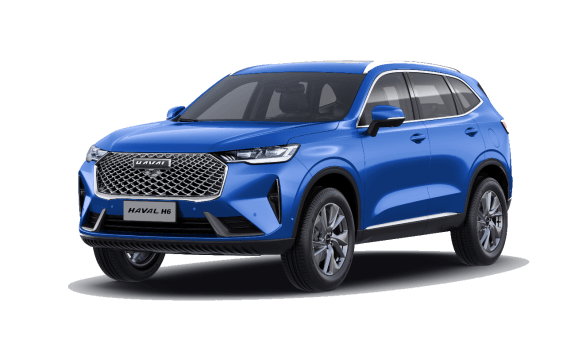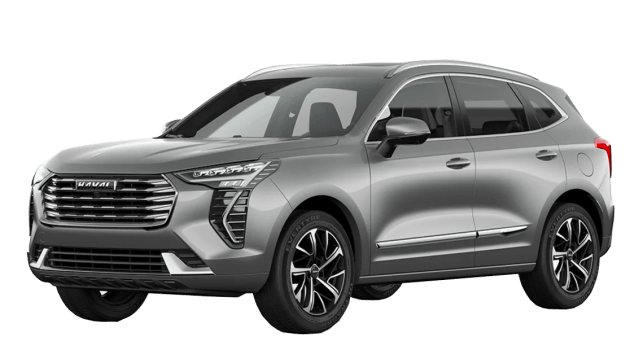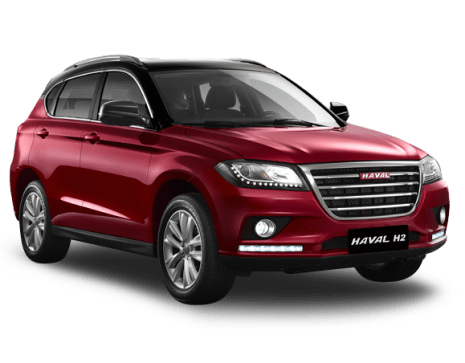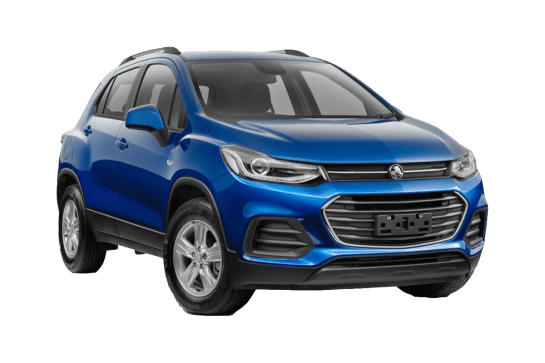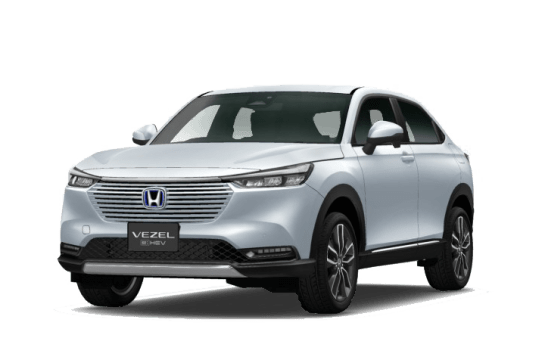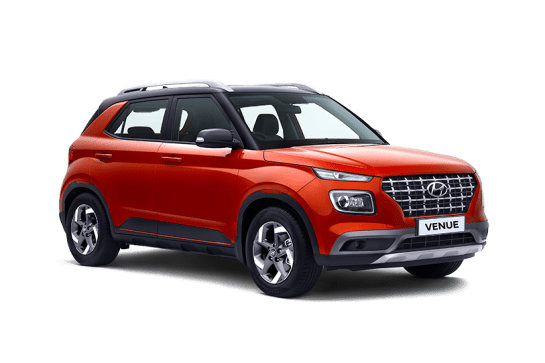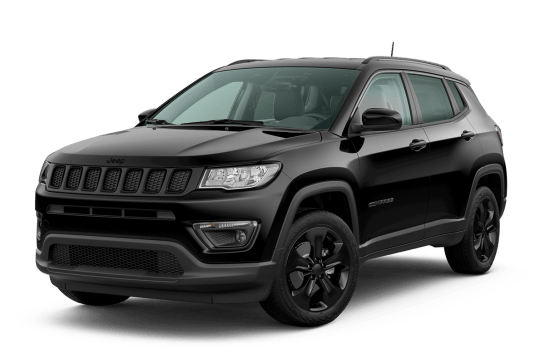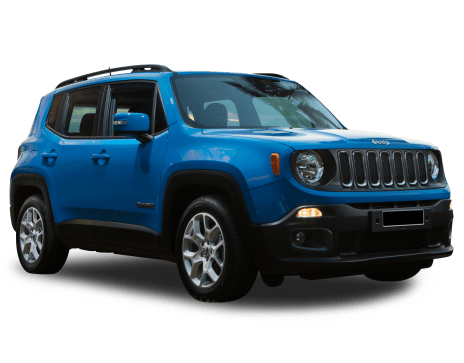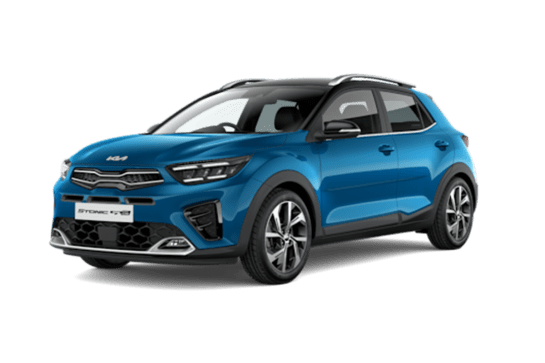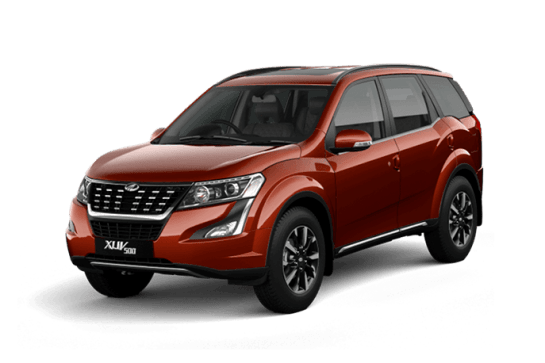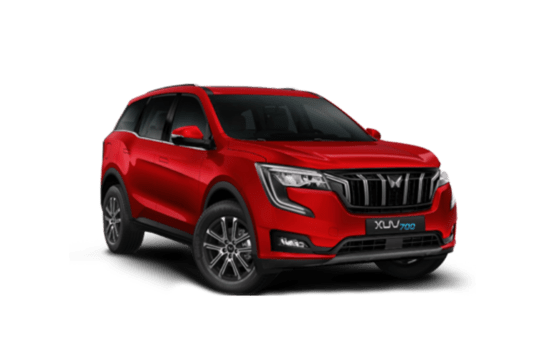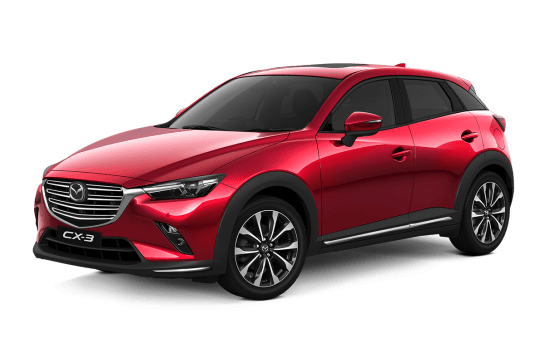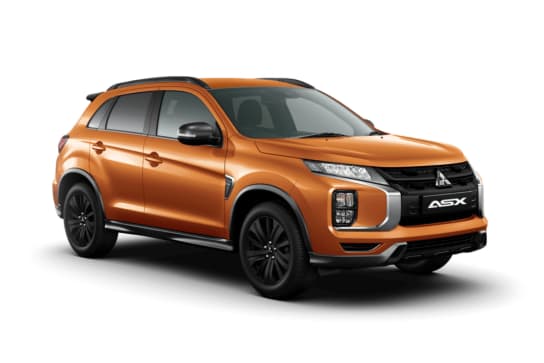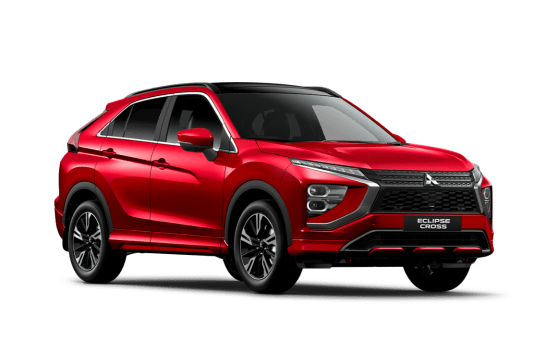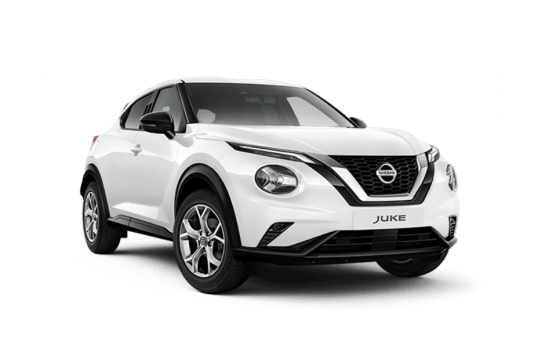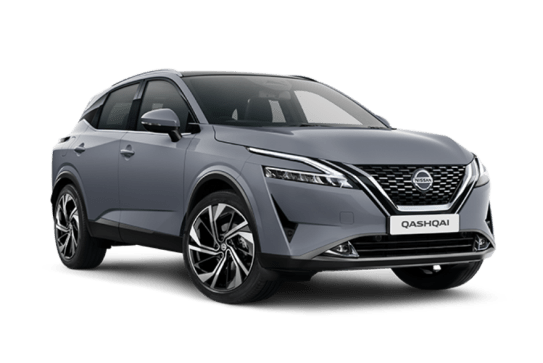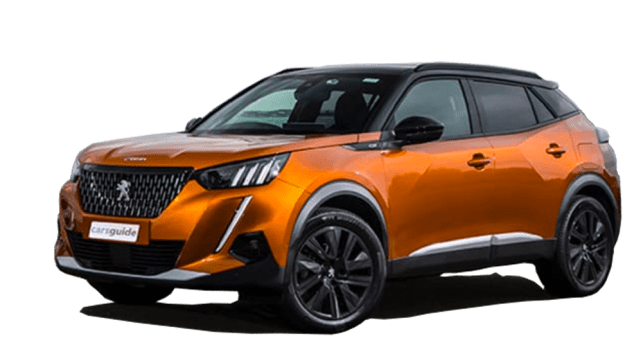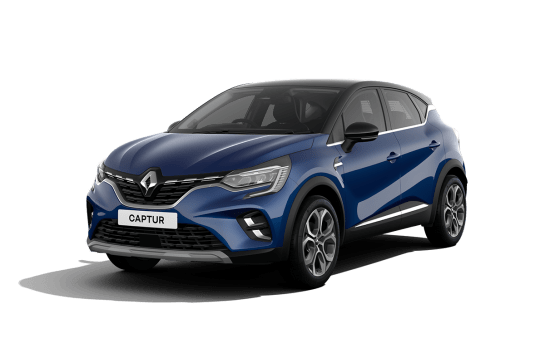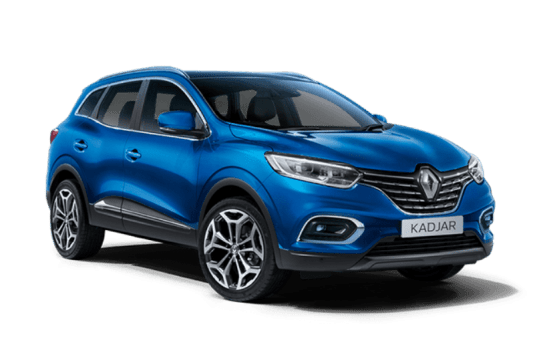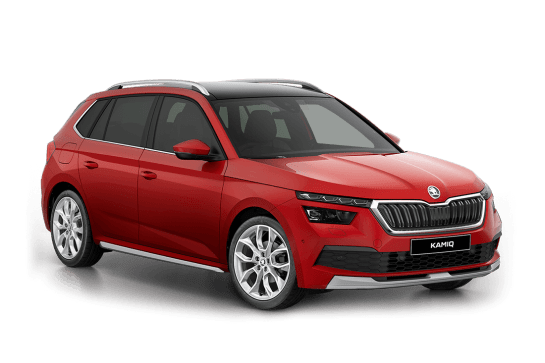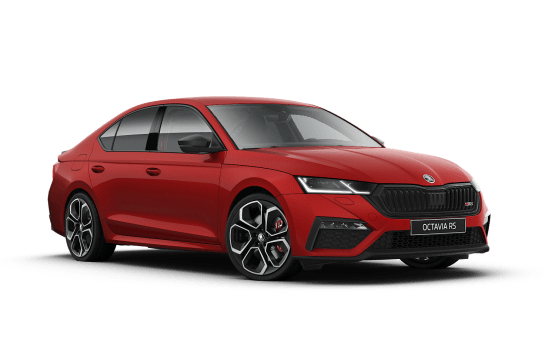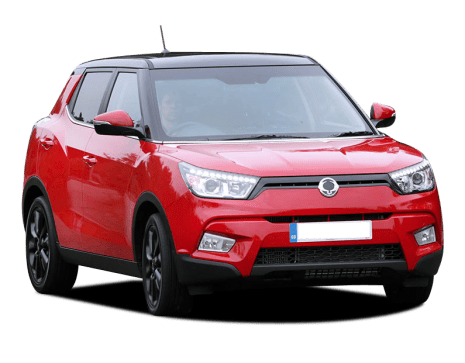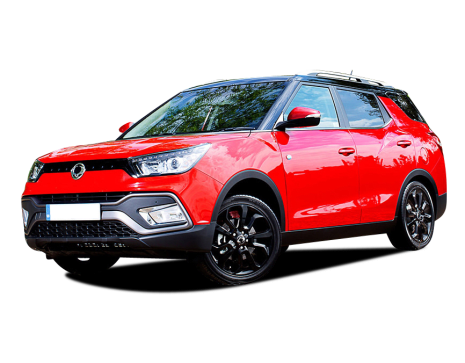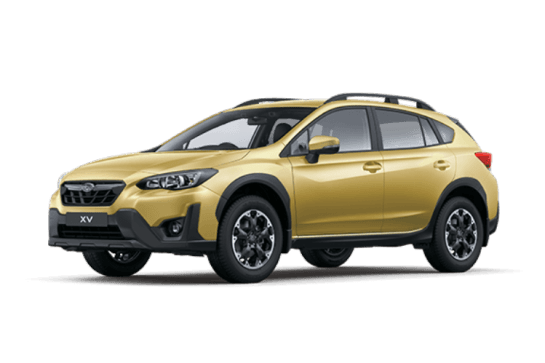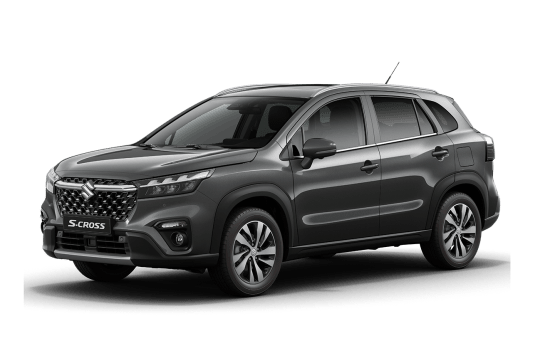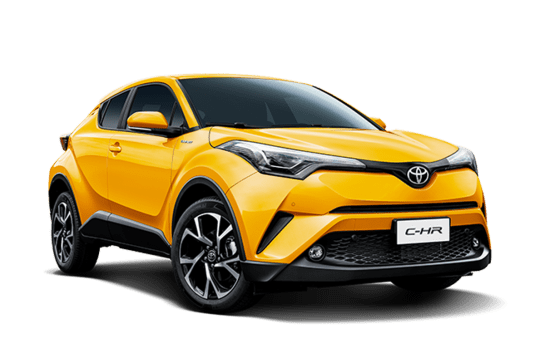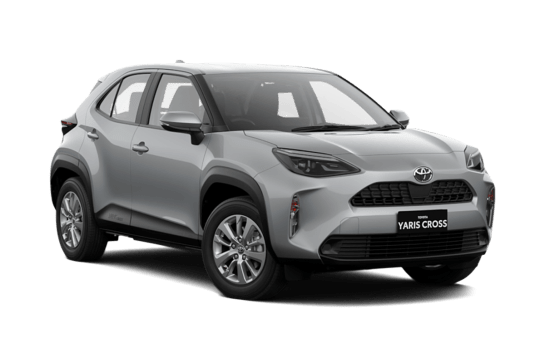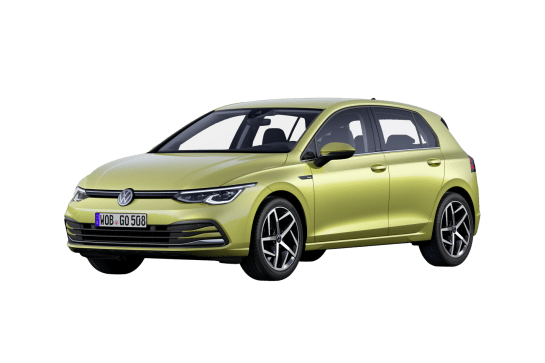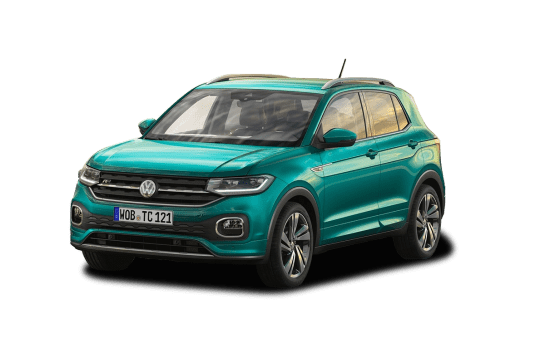
Hyundai Tucson VS Skoda Octavia
Hyundai Tucson
Likes
- Lots of drivetrain options, no matter grade level
- Well-specified for grade
- Hybrid powertrain proves frugal
Dislikes
- Drive experience is mixed
- Higher price point than before
- Safety tech improved but still intrusive
Skoda Octavia
Likes
- Value (including ownership)
- Safety
- Dynamics
Dislikes
- No rear seat power options
- Non-linear power delivery
- Requires premium unleaded
Summary
Hyundai Tucson
For the first time in Australia, the mid-sized Hyundai Tucson is being offered with a hybrid powertrain – which combines its spritely turbo-powered engine with a fuel efficiency-improving electric motor. And it might be enough to swing you to becoming a hybrid fan.
The new powertrain makes the Tucson a proper competitor against Australia’s darling, the Toyota RAV4 but the Nissan X-Trail e-Power and Kia Sportage remain strong rivals.
This week I’m family-testing the mid-spec Elite Hybrid with the N Line option pack to see how the newly updated Tucson handles family life.
Read more about
- Hyundai stalking Toyota RAV4 with new Tucson Hybrid: "We're really bullish on the hybrid specification and bullish in terms of where Hyundai's heading in its hybrid roll-out"
- "We're running our own race": Hyundai Australia confident in product and strategy path in the face of increasing competition from Chinese newcomers like Geely, Smart, Skywell, Xpeng and Zeekr
- 'The industry's all about hybrid': Hyundai Australia boss confirms importance of new Tucson Hybrid in taking the fight to the Toyota RAV4 Hybrid, joining Kona, Santa Fe and i30 sedan hybrid models to challenge market leaders
| Safety rating | |
|---|---|
| Engine Type | 1.6L turbo |
| Fuel Type | — |
| Fuel Efficiency | 5.3L/100km |
| Seating | 5 seats |
Skoda Octavia
Skoda’s a bit like that brooding, low-key actor you know but sometimes struggle to recall. Like Jacqueline McKenzie or Ben Mendelsohn. Considered and respected but far from a preening red carpet showboat.
And the mid-size Octavia is the quintessential Skoda… for people seeking quality engineering and tech without feeling the need to make a boastful badge statement.
The fourth-gen Octavia has been in market here for three years and on the back of a recent safety upgrade this new SportLine model, offered in five-door Liftback and traditional Wagon form, adds extra design and specification spice for the same money as the existing entry-level Style.
Read more about
It lines up against traditional sedans and wagons like Toyota’s all-conquering Camry, established players like the Mazda6 and in-demand newcomers like the BYD Seal EV, not to mention the usual medium SUV suspects.
Stay with us on this first drive to see if this SportLine has what it takes to steer you towards the Skoda Octavia.
| Safety rating | |
|---|---|
| Engine Type | 1.4L turbo |
| Fuel Type | — |
| Fuel Efficiency | 5.8L/100km |
| Seating | 5 seats |
Verdict
Hyundai Tucson8.1/10
The updated Hyundai Tucson Elite Hybrid N Line offers families space, features and easy-enough handling for everyday stuff and the occasional weekend adventure pursuits.
The price point is higher than the previous non-hybrid model but you get a lot of bang for your buck and my family was comfortable this week.
Skoda Octavia8.1/10
Is the Octavia SportLine your kind of automotive quiet achiever? It’s well-equipped and keenly priced with sleek yet understated looks, top-notch safety and a compelling ownership package.
It’s also fuel-efficient for its size and a refined, enjoyable drive. Before you go down that well-trodden mid-size SUV path I’d suggest adding this Skoda - Liftback or Wagon - to your new car short-list.
Note: CarsGuide attended this event as a guest of the manufacturer, with accommodation and meals provided.
Design
Hyundai Tucson
The Hyundai Tucson has seen a minor facelift on the exterior but most of the changes are in the cabin.
The N Line pack means that you get 19-inch alloy wheels over the standard 18-inch version as well as extended body panelling instead of black plastic trims. There is N Line badging across the car too, but N Line option pack does limit you to just four exterior colour choices.
The front features new stacked LED DRLs which tie in with the fang-like design of the rear LEDs. The origami-styled panelling looks more severe than the previous model which helps it stand out in a class that’s heavy on rivals.
The cabin features a completely reconfigured dashboard and now sports a large curved display panel that houses those upgraded tech screens and a new 6.6-inch climate control panel.
The centre console has been redesigned to look like it’s floating and now adds an extra-large storage cubby underneath it.
The upgraded interior makes the Tucson a leader for the mid-sized SUV segment and is very pleasant to spend time in.
Skoda Octavia
The Skoda Octavia is a crisp, contemporary design combining firm character lines and carefully sculpted larger surfaces with a hint of the brand’s VW Group ownership peeking through here and there.
And it’s efficient aerodynamically with a drag coefficient (Cd) of 0.259 for the Liftback and 0.287 for the Wagon.
The broad black grille is uniquely Skoda although the rear treatment is closer to generic premium Euro. Swap out the Skoda badging for four rings or a blue, black and white roundel and no one would bat an eyelid.
But the SportLine stands apart thanks to a gloss-black finish on the grille, mirror covers, rear spoiler on the Liftback and roof rails on the Wagon.
On top of that a rear diffuser and front spoiler have been added, the window surrounds are matt black and dual exhaust tips finish off the rear end.
The interior is dominated by a handsome multi-layer dash design with a 10-inch multimedia touchscreen in the centre and a 10.25-inch ‘Virtual Cockpit’ instrument display facing the driver.
The grippy ‘leather-appointed’, flat-bottom steering wheel has shift paddles lurking behind the rim, there are sporty alloy covers on the pedals and the roof lining is black.
The cloth ‘Sports Comfort’ seats look and feel great, the materials used are high quality and the Octavia shares its umbrella-in-the-door trick with Rolls-Royce, although it must be said, the latter provides two.
Practicality
Hyundai Tucson
The cabin up front is spacious with plenty of head- and legroom on offer. You also won’t jostle for elbow room either when you have a passenger.
The seats are comfortable with their heat function but you might still get fatigue on longer trips as you only get adjustable lumbar on the drivers side and it's simple at best.
The back seat has really good space for the class and no matter the passenger, they were comfortable back there. The seats in the rear are well-padded and access to this row is good for sliding in a child seat as the door aperture is wide.
Other amenities are average with directional air-vents, a single reading light, and a fold-down armrest. My seven-year-old son found the window sills to be quite high, so he didn’t get the view he wanted.
The individual storage is excellent for the class with the redesign as you get a dedicated storage shelf in front of the front passenger and a massive cubby that easily fits a handbag underneath the mid-sized centre console.
There are two cupholders and two drink bottle holders per row but the rear storage bins are skinny. The rear row also gets map pockets but again, these are shallow.
The upgraded technology is a must have and the new multimedia system is easy to use once you spend time with it and looks great with its graphics. The system has built-in satellite navigation, over-the-air updates and wireless connectivity for Apple CarPlay and Android Auto.
Connecting the CarPlay is simple and maintains a strong connection.
Charging options are great with two USB-C ports per row and the front also gets a wireless charging pad and a 12-volt socket to choose from. The centrally located position of the charging pad is handy and the liner grippy - so no phone movement.
Rounding out the practicality is the boot, which has a wide aperture and a loading space level with 582L of capacity available with all seats in use, which is good for the class.
The back row has a 60/40 split but don’t fold flat – they sort of spring up a bit, which might annoy when you do a big Bunnings run.
There is a 12-volt socket, a space-saver spare tyre underneath the floor and you get a powered tailgate in this model – which I always like.
Skoda Octavia
At a fraction under 4.7m long, just over 1.8m wide and close to 1.5m tall, with a close to 2.7m wheelbase the Octavia SportLine Liftback and Wagon are at the upper end of the mid-size category.
At 183cm I’ve got plenty of breathing room in the front, the low-level dash helping to deliver a spacious feel.
For storage, there’s a generous area under an extendable, height-adjustable armrest between the seats, twin cupholders in the centre console, bins in the doors with enough room for large bottles and a decent cooled glove box. There’s also Skoda’s signature lined rubbish bin in the driver’s door.
In the back, sitting behind the driver’s seat, set to my position, I’ve got plenty of room for my feet, legs and head as well as enough shoulder room for three full-size adults on cozy, medium length journeys.
Adjustable ventilation is welcome and storage options include map pockets on the front seat backs, big door bins, oddments storage under the air outlets and a pair of cupholders in the fold-down centre armrest.
Connectivity and power runs to two USB-C outlets, a 12-volt socket and a wireless charging pad up front with a second 12V in the boot. No USBs or 12-volt for back-seaters, which is a miss.
Speaking of the boot, with all seats up the Liftback offers a competitive 600 litres of storage space, expanding to 1555L with the 40/20/40 split rear seat folded. Those numbers grow to 640 and 1700L in the wagon. Plus, there’s a rear seat ‘ski-port’ style door in both.
A space-saver spare sits under the floor, the tailgate is power-operated and for those keen on towing the Octavia is rated up to a 1.5-tonne braked trailer with trailer stability control standard.
Price and features
Hyundai Tucson
There are now six variants for the Hyundai Tucson with the release of the hybrid powertrain and all six have the choice of being either a front-wheel-drive or all-wheel drive with either the petrol engine or hybrid powertrain. And every grade gets the option of adding the N Line style pack. So, there is no excuse for not getting the combo you actually want now.
The model on test is the mid-spec Elite Hybrid with the N Line option pack and its priced from $55,100 before on-road costs. That positions it towards the top end of the market but you get an SUV that's more feature-heavy than most of its rivals.
The standard equipment for the upgraded Elite Hybrid N Line now includes dual 12.3-inch technology screens, wireless Apple CarPlay and Android Auto, as well as a 6.6-inch climate control touchpad.
Other equipment includes a powered driver’s seat, heated front seats, suede/leather upholstery, dual-zone climate control, wireless charging pad, digital radio, four USB-C ports, keyless entry, push-button start, space-saver spare wheel and a powered tailgate.
The Kia Sportage SX hybrid is more affordable at $45,950 MSRP but unlike the Elite Hybrid it misses out on wireless connectivity for phone charging and phone integration apps.
The Toyota RAV4 XSE AWD is priced from $52,585 MSRP but misses out on the newer and bigger technology screens that the upgraded Elite Hybrid has.
The Nissan X-Trail Ti 4WD e-Power is the closest rival in terms of price ($55,090 MSRP) and available features.
Skoda Octavia
With the aim of giving the Octavia a value-focused mid-life boost, the SportLine adds some racy extras outside, inside and underneath and we’ll cover them in detail in the Design and Driving sections.
For now, it’s important to note it all comes at the same price as the already well-equipped, entry-level Style. That is, $40,590, before on-road costs, for the Liftback and close to $41,890 for the Wagon.
And to support this new variant’s arrival, national drive-away pricing has been set for both at an extra $1900 and $2100, respectively ($42,490 and $43,990).
Aside from that, the Sportline boasts a handy standard features list, the highlights being dual-zone climate control, adaptive cruise control, 18-inch alloy rims, auto LED matrix headlights, a power tailgate, a 10-inch media touchscreen (with voice recognition) and 10.25-inch digital instrument display, wireless Android Auto and Apple CarPlay, keyless entry and start, auto rain-sensing wipers, a reversing camera, built-in nav and eight-speaker audio.
An optional ‘Premium Pack’ ($3200) adds power adjustable front seats (with lumbar and memory function), heated front and rear (outboard) seats, ‘Adaptive Lane Guidance’, ‘Emergency Assist’, digital radio, tri-zone climate control and additional USB-C outlets. A panoramic sunroof is available on the Wagon for $1900.
‘Candy White’ is the single no-cost paint colour, with ‘Black Magic Pearlescent’, ‘Graphite Grey Metallic’, ‘Moon White Metallic’ or ‘Race Blue Metallic’ adding $770 to the price-tag while ‘Velvet Red Metallic’ steps up to $1100.
Overall, pretty good value for the category, even before you start factoring in the SportLine extras.
Under the bonnet
Hyundai Tucson
The Elite Hybrid N Line model features a hybrid powertrain that combines an electric motor with a 1.6-litre four-cylinder turbo-petrol engine. They combine to produce 172kW of power and 367Nm of torque. Which is more than enough to make the mid-sized Tucson feel spirited.
This particular variant is AWD and uses a six-speed automatic transmission, which can over rev at times but is mostly smooth with its gear changes.
Skoda Octavia
A 1.4-litre all-alloy, direct-injected, turbo-petrol four-cylinder engine sits under the Skoda Octavia’s bonnet, sending 110kW/250Nm to the front wheels via an eight-speed automatic transmission with ‘Tiptronic’ sequential manual shifting accessible via wheel-mounted paddles.
Efficiency
Hyundai Tucson
The official combined cycle fuel consumption figure is a low 5.3L/100km, and my real-world usage came out at 6.0L after doing a lot of open-road driving where hybrids tend to be at their least efficient, so that is an excellent result.
The Tucson hybrid is the second best for fuel usage after the Toyota RAV4 hybrid, which sits at 4.8L/100km for combined usage. Overall, the new hybrid powertrain has proven itself to be pretty frugal.
Based on the official combined fuel cycle and 53L fuel tank, expect a theoretical driving range of up to 981km, which is great for a family road tripper.
Skoda Octavia
Skoda’s official combined cycle fuel economy number for the Octavia SportLine is 5.7L/100km for the Liftback and 5.9L per hundred for the Wagon, the 1.4-litre turbo four emitting 180g/km of CO2 in the process.
On the launch drive program covering urban, B-road and freeway running along the coast south of Sydney, NSW we recorded an average of 6.4L/100km in the Liftback. Not too shabby for a non-hybrid in this class.
Worth noting the minimum fuel requirement is the pricier 95 RON premium unleaded, though.
You’ll need 45 litres of it to fill the tank which translates to a theoretical range of around 790km… roughly 700km using our real-world number.
Driving
Hyundai Tucson
The new hybrid powertrain offers respectable power delivery that makes the Tucson feel zippy in the city and a relaxed cruiser on the open road.
There can be some over-revving when you’re trying to get up to speed and the accelerator and brake feel touchy at first until you get used to them.
On the hybrid side of things the Elite Hybrid has regenerative braking and there are moments of pure EV mode but it kicks in seemingly when it feels like it. When it is on, there’s practically no engine noise but when it's off, the cabin still remains fairly quiet.
My family went off the paved stuff this week and hit muddy and gravel roads on our quest to find a cool picnic spot, and the Elite Hybrid impressed with how it handled the different terrains. It’s not an off-roader but you can still do mini adventures.
The Tucson is mid-sized and has a very clear reversing camera with front and rear parking sensors, so it’s not too hard to manoeuvre or park.
The real negative feedback is that on three separate occasions, our test car randomly shifted into neutral while driving and to clarify, this did not occur while trying to shift into or out of 'drive' but while on the road, already in drive.
The first time it happened, I thought I had somehow bumped the column shifter but on the other two occasions, I happened to be watching my husband drive and he didn’t touch the shifter.
This is probably just a fault on out test car and not indicative of the model in general but it wasn't fun.
Skoda Octavia
Skoda says the Octavia SportLine will accelerate from 0-100km/h in 9.0 seconds, which isn’t ferociously fast but far from sluggish at the same time, especially for a roughly 1.3-tonne vehicle. And the fact peak torque (250Nm) is available from 1500-4000rpm makes it easy to drive with plenty of oomph through the mid-range.
Worth noting, while the urge is there, the turbo four’s power delivery isn’t always linear, more often from step off, with the engine at times taking half a beat to respond to a squeeze of the accelerator pedal before the power arrives.
Nothing dramatic, however, and the ‘Shift-by-Wire’ eight-speed auto transmission is smooth, with ‘Eco’, ‘Normal’ and ‘Sport’ modes available, the latter holding onto ratios longer on the way up the gears and shifting down more readily when an extra burst of acceleration is required. And if you want to take full control, ‘manual’ shifts via wheel-mounted paddles are satisfyingly quick.
Suspension is strut front with a ‘compound link crank-axle’ at the rear, the latter being Skoda-speak for a torsion beam.
The SportLine’s suspension is 15mm lower than the Style’s with springs and shock absorbers re-tuned for sharper dynamic response. Yet, despite that and the standard 18-inch rims shod with low-profile tyres there’s no penalty in terms of ride compliance.
Even over coarse B-road surfaces the Octavia remains comfortable and composed. The steering is nicely weighted and road feel is good, with a nice connection between the front tyres and hands on the wheel.
Pressing on through the curves the car is stable and balanced with the (225/45) Bridgestone Turanza rubber gripping hard. And if you really have the bit between your teeth an electronically-controlled diff lock helps put the power down effectively.
Braking by ventilated discs at the front with solid rotors at the rear and under the pressure of some steep, twisting and fairly rapid descents stopping power is solid. The pedal is progressive on application and when easing off.
Under the heading of miscellaneous observations, engine noise is agreeably low, especially for a small capacity turbo-petrol engine, the sports front seats are supportive and comfortable over lengthy stints behind the wheel and a lateral slider located below the central multimedia screen to control audio volume is a neat ergonomic solution.
In the midst of the current arm wrestle between the design cleanliness of an on-screen volume control and the simple effectiveness of a physical dial the Octavia’s slider, while still a haptic-style operation, represents a safe and practical middle ground between the two.
Safety
Hyundai Tucson
FINALLY! Hyundai has listened to the people.
They have found a workaround for the annoyingly intrusive beeping alerts associated with the traffic sign recognition and speed alert tech. Yes, they still alert unless you turn them off and yes, you still have to turn the damn thing off every time you get in the car, but you not longer have to access five to six menu pages to do so. Hurrah.
The Hyundai Tucson Elite Hybrid N Line has a robust safety features list and includes equipment like blind spot monitoring, driver attention monitoring, safe exit warning, rear occupant alert, forward collision warning, LED daytime running lights, rear cross-traffic alert, lane keeping aid, traffic sign recognition, intelligent seatbelt warning, adaptive cruise control, a reversing camera, and front/rear parking sensors.
Our test model misses out on lane departure alert and the lane keeping aid is too intrusive for every day driving. It gets to the point where you wonder who is driving, you or the car.
The Hyundai Tucson has a maximum five-star ANCAP safety rating from testing done in 2021 and the hybrid variants are covered by this as well. It has seven airbags, including, the newer front centre airbag.
The Tucson has two ISOFIX child seat mounts and three top-tethers.
Auto emergency braking (AEB) is standard and features car, pedestrian, cyclist and junction assist detection which is operational from 5.0 – 80km/h (85km/h for car) but it's usual to see a higher top speed for the car detection (usually 180km/h).
Skoda Octavia
Safety is one of Skoda’s strongest suits so no surprise the Octavia scored a maximum five ANCAP stars from assessment in 2019.
It includes active crash-avoidance tech highlights like AEB (with pedestrian and cyclist detection), a surround-view and reversing camera, ‘Park Assist’, lane departure warning, lane keeping assist, rear cross-traffic alert, rear parking sensors, tyre pressure monitoring and fatigue detection.
If an impact is unavoidable, there are eight airbags on-board, including a front centre and driver’s knee bag which holds up well in 2024 and shows how far ahead of the passive safety game the Octavia was when it launched here in 2021.
There are three top tethers for child seats across the second row, with ISOFIX anchors on the outer positions.
Ownership
Hyundai Tucson
Hyundai offers the Tucson with a five-year/unlimited km warranty and the battery is covered by an eight-year/160,000km warranty which is pretty standard for the class now.
You can pre-purchase servicing for up to five years and the breakdowns are as follows.
Three years or up to 30,000km for $1240 (average $413 per service).
Four years or up to 40,000km for $1700 (average $425 per service).
Five years or up to 50,000km for $2040 (average $408 per service).
The five-year pricing is comparable to its rivals and not outrageous for the class.
Servicing intervals could get annoying if you put a lot of kilometres on your car as they sit at every 12 months or 10,000km, whichever occurs first.
Skoda Octavia
The Octavia is covered by Skoda’s seven-year, unlimited-kilometre warranty, which is two years up on the majority of the mainstream market.
Roadside Assist is complimentary for the first year, renewed annually if you have your Octavia serviced at an authorised Skoda dealer.
The main service interval is 12 months/15,000km, which is in line with most of the competition and Skoda offers five- and seven-year service packs, the latter equating to $393 per workshop visit, which isn’t out of line for the segment.
And through Skoda Choice you can opt for a Guaranteed Future Value offer ranging up to five years and currently at a 6.99 per cent rate.







